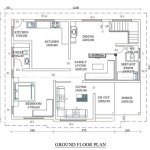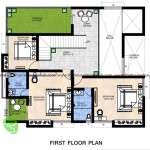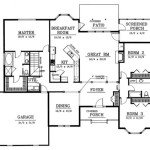Robert Venturi Vanna House Plans: A Bold Statement in Architectural Design
Introduction
The Robert Venturi Vanna House, designed by the renowned architect Robert Venturi, is a striking example of postmodern architecture. Completed in 1964, the house stands as a testament to Venturi's innovative approach to design, challenging conventional notions of form and function. This article delves into the history, design principles, and significance of the Robert Venturi Vanna House plans, offering insights into Venturi's architectural vision and legacy.Historical Context
The 1960s marked a period of significant cultural and architectural upheaval. Modernism, the dominant architectural style of the time, was challenged by a new generation of architects seeking to break free from its strictures. Robert Venturi emerged as a leading figure in this movement, advocating for a more contextual and eclectic approach to design. His iconic Vanna House, located in Chestnut Hill, Philadelphia, exemplified this shift in architectural thinking.Design Principles and Features
The Robert Venturi Vanna House plans showcase Venturi's distinctive design principles, which he outlined in his influential book, "Complexity and Contradiction in Architecture." Venturi's architecture often juxtaposes contrasting elements, creating a sense of tension and ambiguity. He rejected the idea of a singular, unified style, instead embracing diversity and complexity. 1.Ordinary and Everyday Forms:
Venturi drew inspiration from ordinary, everyday forms, such as vernacular architecture, commercial signage, and suburban houses. He incorporated these elements into his designs, blurring the boundaries between high and low culture. 2.Double Functioning Elements:
Venturi believed that architectural elements should serve multiple functions. In the Vanna House, the fireplace serves as both a hearth and a sculptural element, while the front door also functions as a garage door. 3.Symbolic and Representational Forms:
Venturi used symbols and representations to convey meaning and create a narrative within his architecture. The Vanna House features a prominent triangular pediment, a classical architectural element, which Venturi employed ironically to comment on traditional notions of grandeur.Architectural Significance
The Robert Venturi Vanna House plans hold significant architectural significance. The house was a groundbreaking project that challenged the prevailing modernist aesthetic and opened up new possibilities for architectural expression. Venturi's innovative approach to design, with its emphasis on complexity, contradiction, and contextualism, has influenced generations of architects and continues to inspire contemporary architectural discourse. 1.Postmodern Pioneer:
The Vanna House is widely regarded as a seminal work of postmodern architecture. Venturi's bold experimentation with form and function helped to define the postmodern movement, which sought to break free from the limitations of modernism and embrace a more diverse and inclusive approach to architecture. 2.Challenging Conventions:
Venturi's design challenged conventional notions of beauty and taste. He rejected the idea of a singular, unified style, instead celebrating the messy and contradictory nature of the built environment. The Vanna House's eclectic mix of forms and materials reflects Venturi's belief that architecture should engage with the complexities of everyday life. 3.Influence on Architectural Theory and Practice:
Venturi's writings and projects, including the Vanna House, have had a profound impact on architectural theory and practice. His ideas about complexity, contradiction, and contextualism have been widely adopted by architects worldwide, leading to a more diverse and vibrant architectural landscape.Conclusion
The Robert Venturi Vanna House plans stand as a testament to the architect's groundbreaking approach to design. Venturi's innovative use of ordinary forms, double-functioning elements, and symbolic representations challenged conventional notions of beauty and taste, and helped to define the postmodern movement in architecture. The Vanna House's enduring significance lies in its ability to provoke thought, inspire creativity, and continue to shape architectural discourse to this day.
Ad Classics Vanna Venturi House Robert Archdaily

Postmodernism Vanna Venturi House By Robert

The Smallish Vanna Venturi House Project Small

File Vanna Venturi Ground Floor Plan Cropped Jpg Wikimedia Commons

Postmodernism Vanna Venturi House By Robert
The Vanna Venturi House S New Owner Settles Into Postmodern Icon Architect

Gallery Of Ad Classics Vanna Venturi House Robert 4

Postmodernism Vanna Venturi House By Robert

Vanna Ventury House By Robert Venturi In Philadelphia 1964 Usa

House Vanna Robert Venturi In Autocad Cad 651 08 Kb Bibliocad








